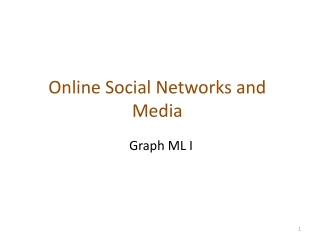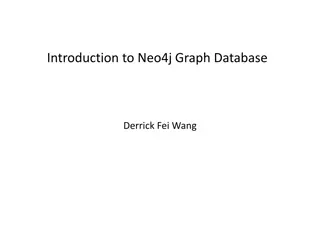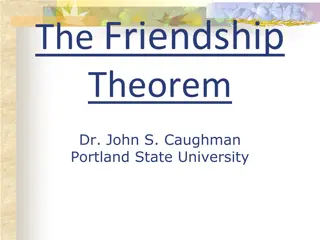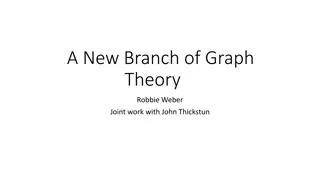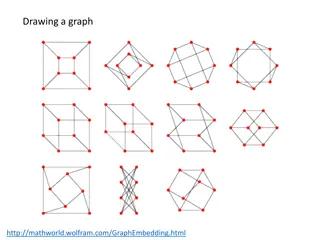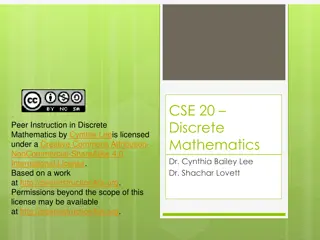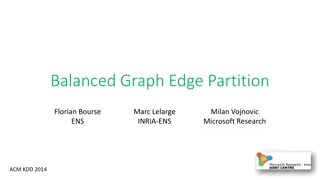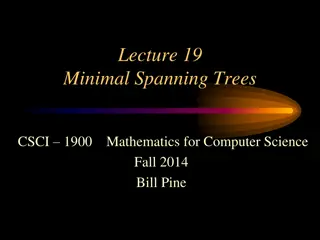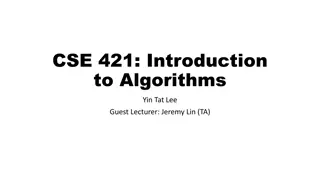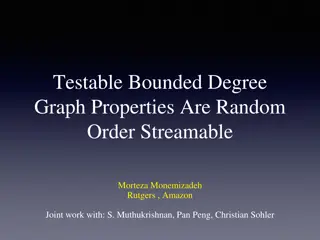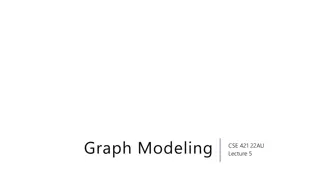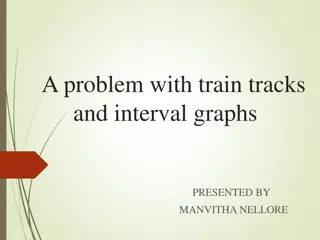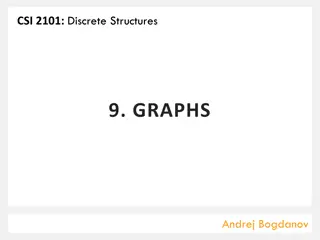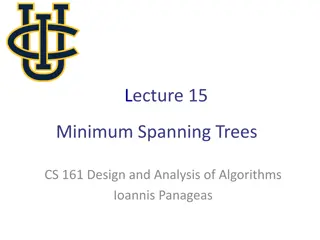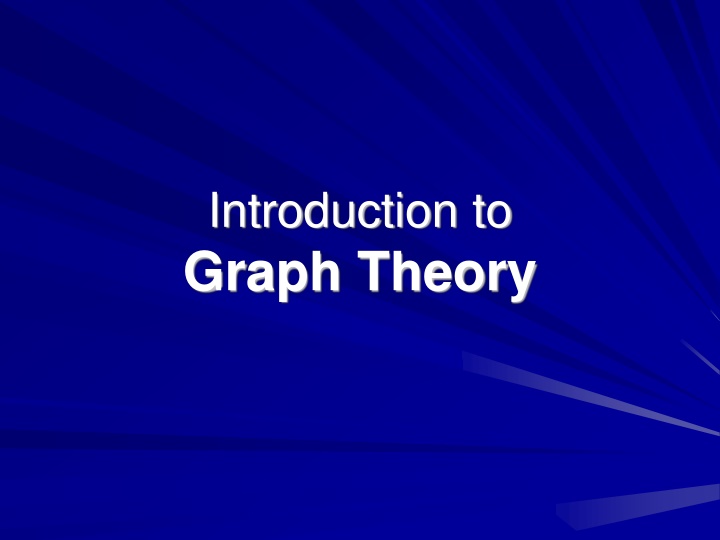
Exploring Graph Theory Fundamentals
Discover the history, basics, and key concepts of graph theory, including famous problems like the four-color problem. Learn about vertices, edges, degrees, simple graphs, complete graphs, and bipartite graphs. Dive into the ordered triple representation of graphs and understand the core principles of this fascinating mathematical field.
Uploaded on | 0 Views
Download Presentation

Please find below an Image/Link to download the presentation.
The content on the website is provided AS IS for your information and personal use only. It may not be sold, licensed, or shared on other websites without obtaining consent from the author. If you encounter any issues during the download, it is possible that the publisher has removed the file from their server.
You are allowed to download the files provided on this website for personal or commercial use, subject to the condition that they are used lawfully. All files are the property of their respective owners.
The content on the website is provided AS IS for your information and personal use only. It may not be sold, licensed, or shared on other websites without obtaining consent from the author.
E N D
Presentation Transcript
Introduction to Graph Theory
Graph Theory - History Leonhard Euler's paper on S even Bridges of K nigsber g , published in 1736.
Famous problems In 1852 Francis Guthrie posed the four color problem which asks if it is possible to color, using only four co lors, any map of countries in such a way as to prevent two bordering countries from having the same color. This problem, which was only solved a century later in 1976 by Kenneth Appel and Wolfgang Haken, can be considered the birth of graph theory.
Basics Graph theory
What is a Graph? Informally a graph is a set of vertices joined b y a set of lines or arrows. 1 3 2 1 3 2 4 4 5 6 5 6
Definition: Graph G is an ordered triple G:=(V, E, f) V is a set of nodes, points, or vertices. E is a set, whose elements are known as edges or li nes. f is a function maps each element of E to an unordered pair of vertices in V.
Definitions Vertex Basic Element Drawn as a node or a dot. Vertex set of G is usually denoted by V(G), or V Edge A set of two elements Drawn as a line connecting two vertices, called en d vertices, or endpoints. The edge set of G is usually denoted by E(G), or E.
Example V:={1,2,3,4,5,6} E:={{1,2},{1,5},{2,3},{2,5},{3,4},{4,5},{4,6}}
Degree A B C D F E The degree of B is 2. Number of edges incident on a vertex.
Simple Graphs Simple graphs are graphs without multiple ed ges or self-loops.
Complete Graph Denoted Kn Every pair of vertices are adjacent Has n(n-1) edges
Bipartitegraph V can be partitioned into 2 sets V1and V2 such that (u,v) E implies either u V1and v V2 OR v V1 and u V2.
Complete Bipartite Graph Bipartite Variation of Complete Graph Every vertex of one set is connected to every o ther vertex on the other set.
Connectivity A graph is connected if you can get from any vertex to any other by following a seq uence of edges (OR) any two vertices are connected by a path. A directed graph is strongly connected if there is a di rected path from any vertex to any other vertex.
Cycle A path from a vertex to itself is called a cycle. A graph is called cyclic if it contains a cycle; otherwise it is called acyclic A B C 1 3 2 Cycle 4 D 5 6 F E Cycle Unreachable
Path A path is a sequence of vertices such that there is an e dge from each vertex to its successor. A path is simple if each vertex is distinct. A B C 1 3 2 Cycle 4 D 5 6 F E Cycle Unreachable Simple path from 1 to 5 = [ 1, 2, 4, 5 ] Our text s alternates the vertices and edges. If there is path p from u to v then we say v is reachable from u via p.
Planar Graph Can be drawn on a plane such that no two edges inters ect K4 is the largest complete graph that is planar
Tree Connected Acyclic Graph For any two vertices there exist s exactly one path between the m.
A weighted graph It is a graph for which each edge has an associated w eight, usually given by a weight functionw: E R. 2 1.2 1 3 1 3 2 2 .2 .3 1.5 5 .5 3 1 4 5 6 4 5 6 .5
Dual Graph Faces are considered as vertices Edges denote face adjac ency Dual of dual is the origi nal graph
Directed Graph (digraph) Edges have directions An edge is an ordered pair of vertices.
Degree (Directed Graphs) 1 2 4 5 The in degree of 2 is 2 and the out degree of 2 is 3. In degree: Number of edges entering Out degree: Number of edges leaving Degree = indegree + outdegree
Degree: Simple Facts If G is a digraph with m edges, then indeg(v) = outdeg(v) = m = |E | If G is a graph with m edges, then deg(v) = 2m = 2 |E | Number of Odd degree vertices is even
Subgraph Vertex and edge sets are subsets of those of G a supergraph of a graph G is a graph that contains G as a subgraph. A graph G contains another graph H if some su bgraph of G is H or is isomorphic to H. H is a proper subgraph if H!=G
Isomorphism Bijection, i.e., a one-to-one mapping: f : V(G) -> V(H) u and v from G are adjacent if and only if f(u) and f(v) are adjacent in H. If an isomorphism can be constructed between two graphs, then we say those graphs are isom orphic.
Isomorphism Problem Determining whether two gra phs are isomorphic Although these graphs look ve ry different, they are isomorp hic; one isomorphism between them is f(a) = 1 f(b) = 6 f(c) = 8 f(d) = 3 f(g) = 5 f(h) = 2 f(i) = 4 f(j) = 7

